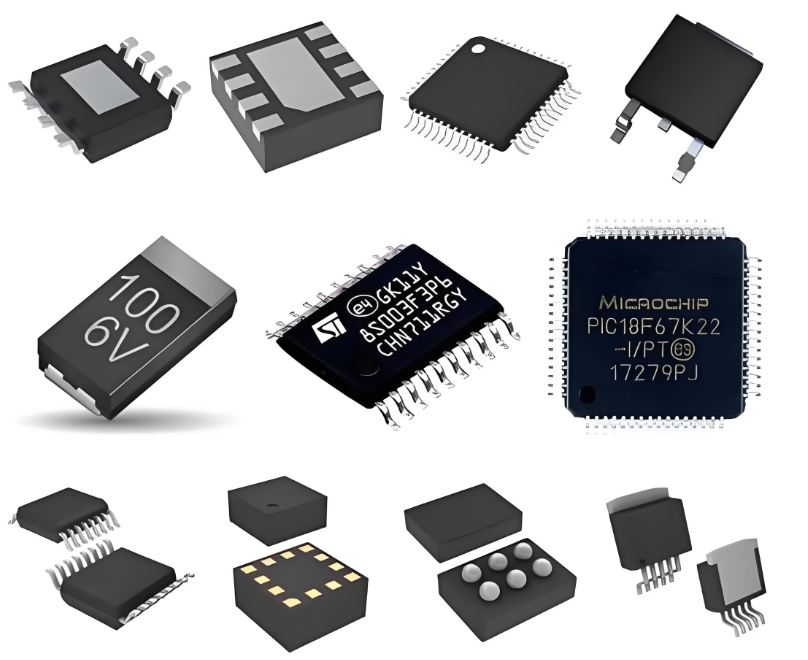**AD725ARZ: A Comprehensive Technical Overview of the RGB-to-NTSC/PAL Encoder**
The **AD725ARZ** from Analog Devices is a highly integrated, monolithic encoder IC designed to convert standard red, green, and blue (RGB) signals along with sync information into a fully composite video signal compliant with either **NTSC or PAL** television standards. This device simplifies the design process for systems requiring video output, making it a cornerstone component in a wide array of applications, from industrial imaging and legacy computer video interfaces to medical equipment and broadcast systems.
**Core Functionality and Architecture**
At its heart, the AD725ARZ performs the critical function of **encoding analog RGB signals** into a composite video broadcast signal (CVBS). This process involves several sophisticated steps managed internally by the chip:
1. **Matrix and Luminance Processing:** The incoming RGB signals are first combined in a specific proportion to create the **luminance (Y) signal**, which carries the black-and-white picture information. This is based on the standard formula: Y = 0.299R + 0.587G + 0.114B.
2. **Chrominance Modulation:** The chip separates the color difference information (chrominance) into two components: I and Q for NTSC, or U and V for PAL. These components are then modulated onto a **subcarrier frequency** (3.58 MHz for NTSC, 4.43 MHz for PAL) using a **quadrature amplitude modulation (QAM)** scheme.
3. **Sync and Burst Addition:** The encoder incorporates composite sync pulses and the critical **color burst signal**, a short reference burst of the subcarrier frequency added to the back porch of each horizontal sync pulse. This burst allows television receivers to demodulate the color information accurately.
4. **Combination and Output:** The final stage combines the generated luminance (Y), the modulated chrominance (C), and the sync signals to produce the complete **composite video output**.
**Key Features and Technical Specifications**
The AD725ARZ stands out due to its combination of performance, integration, and ease of use:
* **Dual Standard Operation:** A single pin control (**PAL/NTSC Select**) allows designers to toggle between the two major analog video standards effortlessly.
* **Integrated Color Burst and Sync Timing:** The device requires only a single **crystal oscillator** (3.58 MHz or 4.43 MHz) to generate all necessary internal timing signals, including the color subcarrier, sync, and burst. This minimizes external component count.

* **S-Video (Y/C) Output:** In addition to composite video, the AD725 provides separate **luminance (Y) and chrominance (C)** outputs. This facilitates the creation of higher-quality S-Video connections, which reduce cross-color artifacts by keeping the signals separate.
* **Low Power Consumption:** Operating from a single +5V supply and typically consuming just 100 mW, it is suitable for portable and power-sensitive applications.
* **Excellent Differential Gain and Phase:** These key performance parameters are tightly controlled, ensuring high color fidelity and consistency in the generated video signal.
**Application Circuits and Design Considerations**
Implementing the AD725ARZ is relatively straightforward. A typical application circuit requires a minimal set of external components: the master crystal, a few resistors to set input gain and DC levels, coupling capacitors, and a simple output filter. The RGB inputs typically expect standard **0.7Vpp** analog signals and separate TTL-level composite sync. Proper power supply decoupling is essential to maintain signal integrity and prevent noise.
**Conclusion and ICGOODFIND Summary**
The AD725ARZ encapsulates complex television encoding logic into a robust, easy-to-use 16-pin SOIC package. Its ability to seamlessly bridge the gap between digital systems' native RGB output and the ubiquitous analog composite video displays of its era solidified its position as a fundamental solution for video generation.
**ICGOOODFIND:** The **AD725ARZ** is a highly integrated and versatile encoder IC that remains relevant for maintaining and designing with legacy video systems. Its **dual NTSC/PAL support**, minimal external part requirement, and provision of both **composite and S-Video outputs** make it an efficient and cost-effective solution for converting **RGB signals** into broadcast-standard analog video.
**Keywords:**
1. **RGB-to-NTSC/PAL Encoder**
2. **Composite Video**
3. **Analog Devices**
4. **Video Signal Processing**
5. **S-Video (Y/C)**
